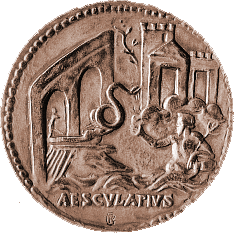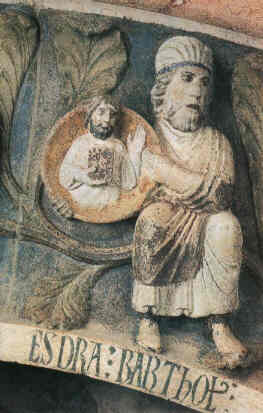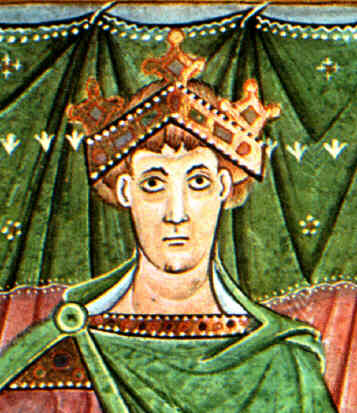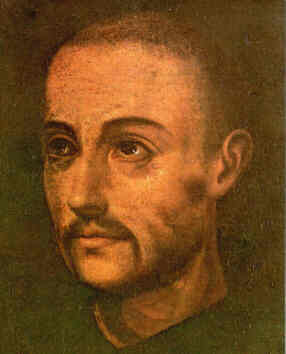
Historic Personalities
Tiber Island has been crucial in the history of Rome as it provided the crossing point between the Latins and the Etruscans and remained for the better part of two millennia a strategic part of the economic, military and social life of the city.
Sacred to the gods of health at least from the time of Tarquin the Proud, over the centuries it was the seat of a temple to Aesculapius, Christ was followed in his aspect of Christus medicus by the Franciscan monks, the Confraternity of the "Red Hoods" looked after the dead and the friars of Saint John of God established in the 16th century the hospital of Fatebenefratelli which is still one of the major hospitals of Rome.
The history of the Island is marked by notable personalities ranging from a demigod to saints, great dignitaries and a "premature" American feminist. The following are a few of the important personalities associated with the history of the Island.
Aesculapius |
 |
Saint
Bartholomew. |
 |
| Otto III The emperor, whose roman palace was on the Aventine, had the church of Saint Batholomew built on the ruins of the temple of Aesculapius on Tiber Island. Before he secured the remains of the Apostle, the church was dedicated to his tutor and friend, Saint Adalbert of Prague, who was killed at Danzig in 998 while trying to convert the local people. Remains of the Ottonian construction can be seen in the crypt, in particular the capitals decorated with the imperial eagle. |
 |
| Rahere A dignitary of the court of Henry I, King of England, he was afflicted with a skin disease on a pilgrimage to Rome and was cured on Tiber Island. In gratitude when he returned to London, he founded the Church and the Hospital of Saint Bartholomew - Saint Bart's - in 1123. Both the institutions are still thriving, and Saint Bart's is one of the most important hospitals in London. |
| Saint
John of God. Joan Ciudad was born in 1495 at Montemor-o-Novo in Portugal. Abandoned by his parents, he grew up in the house of Francisco Cid, steward of the Count of Oropesa. Soldiering from 1523 to 1533 he fought against the French at Fuenterrebia, then against the Turks at Vienna. After a pilgrimage to Santiago de Compostela he settled in Granada. In 1539 he embraced religion after hearing Saint John of Avila preach, and the same year he was committed to the Royal Hospital for insanity. When released he decided to dedicate his life to aiding the sick and the suffering. He conceived and organized a hospital at Granada that was well in advance of the time. He died in 1550 at Pisa. In 1584 his followers in the Archconfraternity of Saint John of God -popularly known as Fatebenefratelli "Do-Good-Brothers"- acquired the premises of an ancient convent on Tiber Island and established the Ospedale Fatebenefratelli which is still one of the most up to date and important hospitals in Rome. On 1st October 1586 Pope Sixtus V raised the Archconfraternity to the rank of religious order and today it is represented by hospitals around the world. |
|
| Margaret
Fuller Born
in Cambridgeport, Massachusetts, she received an
advanced humanistic education and became a friend
of such notables of American arts and letters as
Nathaniel Hawthorne, Ralph Waldo Emerson and
Horace Greeley. She wrote Woman in the Nineteenth
Century, published by Greeley in 1845, in which
she championed the cause of improving the social
position of women. In 1846 Greeley commissioned
her to write about her travels in Europe for his
New York Tribune, so she became the first woman
foreign correspondent. She espoused the ideals of
Mazzini and in Italy was active in the short-lived
Roman Republic. Appointed director of the
Fatebenefratelli Hospital she supervised the
treatment of the wounded from the Battle of the
Janiculum against the French troups fighting to
reinstate the Pope. |
 |
